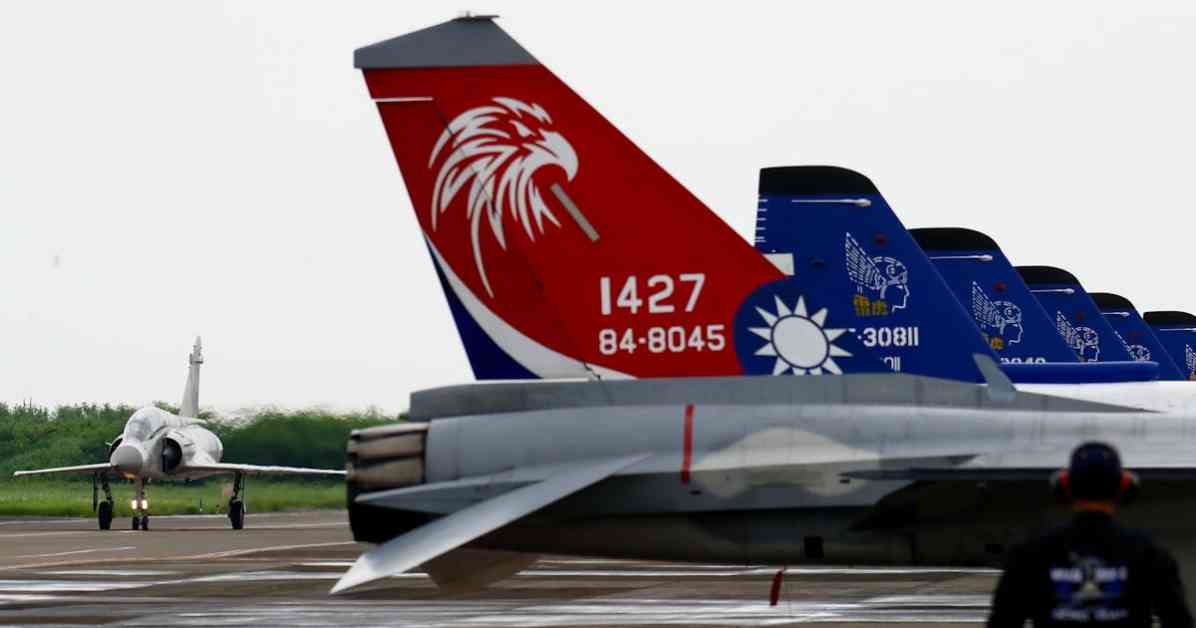**U.S. Defense Aid for Taiwan: Strengthening Deterrence Against Chinese Aggression**
Antonio Graceffo, Ph.D., a seasoned Asia expert, sheds light on the current state of U.S. defense aid for Taiwan and its implications amidst rising tensions in the region. With over two decades of experience in Asia, including a PhD from Shanghai University of Sport and a China-MBA from Shanghai Jiaotong University, Graceffo’s insights provide valuable context to the complex dynamics at play.
In August, the U.S. approved a substantial $360 million arms package for Taiwan, which notably included 1,000 armed drones. These drones are expected to play a pivotal role in Taiwan’s defense strategy, forming a formidable shield against potential People’s Republic of China (PRC) aggression. By targeting ships, personnel, and countering PLA drones, these unmanned vehicles will bolster Taiwan’s ability to defend itself in the event of an invasion.
The longstanding support from the U.S. towards Taiwan’s defense efforts is evident through initiatives like the 1979 Taiwan Relations Act (TRA), which obligates the U.S. to provide weapons for Taiwan’s self-defense. President Biden has reiterated the U.S.’s commitment to Taiwan’s security, signaling a willingness to intervene in the event of an attack. This unwavering support is further underscored by the U.S.’s commitment to maintaining freedom of navigation in key strategic areas like the Indo-Pacific, South China Sea, and Taiwan Strait.
The strategic partnership between the U.S., Japan, and Taiwan is increasingly crucial in deterring Chinese aggression. Under the Treaty of Mutual Cooperation and Security between Japan and the U.S., any attack on Japanese-controlled territory would necessitate U.S. action. With China’s escalating gray zone tactics near Taiwan, including frequent air and naval operations, the region faces heightened uncertainty. These actions not only strain Taiwan’s resources but also raise doubts among its citizens about the effectiveness of its defense capabilities.
The passage of the Taiwan Enhanced Resilience Act (TERA) as part of the National Defense Authorization Act for FY2023 marks a significant milestone in bolstering Taiwan’s defense capabilities. This legislation authorizes Foreign Military Financing (FMF) for Taiwan for the first time, providing essential support for the purchase of U.S. arms. With Congress allocating substantial funds for FMF in FY2024, Taiwan’s modernization efforts receive a crucial financial boost.
Despite these positive developments, there is a growing debate within the U.S. Congress and among the public regarding America’s overseas military commitments. While conservatives emphasize the threat posed by China and advocate for increased support to Taiwan, liberals tend to focus on Russia as the primary adversary. This divergence in viewpoints underscores the complex geopolitical landscape in which Taiwan finds itself.
Senator Josh Hawley’s recent letter to Secretary of Defense Lloyd Austin highlights concerns about the Biden Administration’s prioritization of air and missile defense for Ukraine over Taiwan. Hawley argues that neglecting Taiwan’s defense needs could leave the region vulnerable to Chinese aggression, emphasizing the urgent need for increased support. With China’s potential invasion of Taiwan looming as a stark reality, swift action is imperative to deter such a catastrophic scenario.
In conclusion, the U.S.’s defense aid for Taiwan plays a crucial role in bolstering the island’s deterrence capabilities against Chinese aggression. As tensions in the region continue to escalate, strategic partnerships between the U.S., Japan, and Taiwan become increasingly vital in maintaining stability and security. With ongoing debates about America’s military commitments, the need to prioritize Taiwan’s defense requirements remains paramount in safeguarding regional peace and security.



















